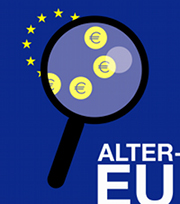Short expertise on behalf of AK Vienna.
"As expected, the organisational figures send a clear signal in view of the balance of power of capital and labour. At 2,176 European lobby groups, we have coded 63 per cent of all organisations as business interests, 19 to which another 168 lobby groups of professional groups may be added, because the majority of their work is carried out as self-employed work in SMEs. Overall, 68 per cent of organisations would therefore have to be allocated to the camp of business interests. Compared to this, the share of 47 trade unions (or 100 according to the Transparency Register) counts for just one or two per cent of the European lobby groups. Apart from the trade union organisations, trade unions play a role in some lobby groups, which have been coded as multiple interest organisations as their membership combines different interests (e.g. business and employee)."

